Since its presentation in 2014, the Trek Powerfly has been revised a few times, but it has never undergone a major makeover, not even in this latest update. This isn’t necessarily a bad thing, as our first ride review of the Trek Powerfly LT 2018 reveals.
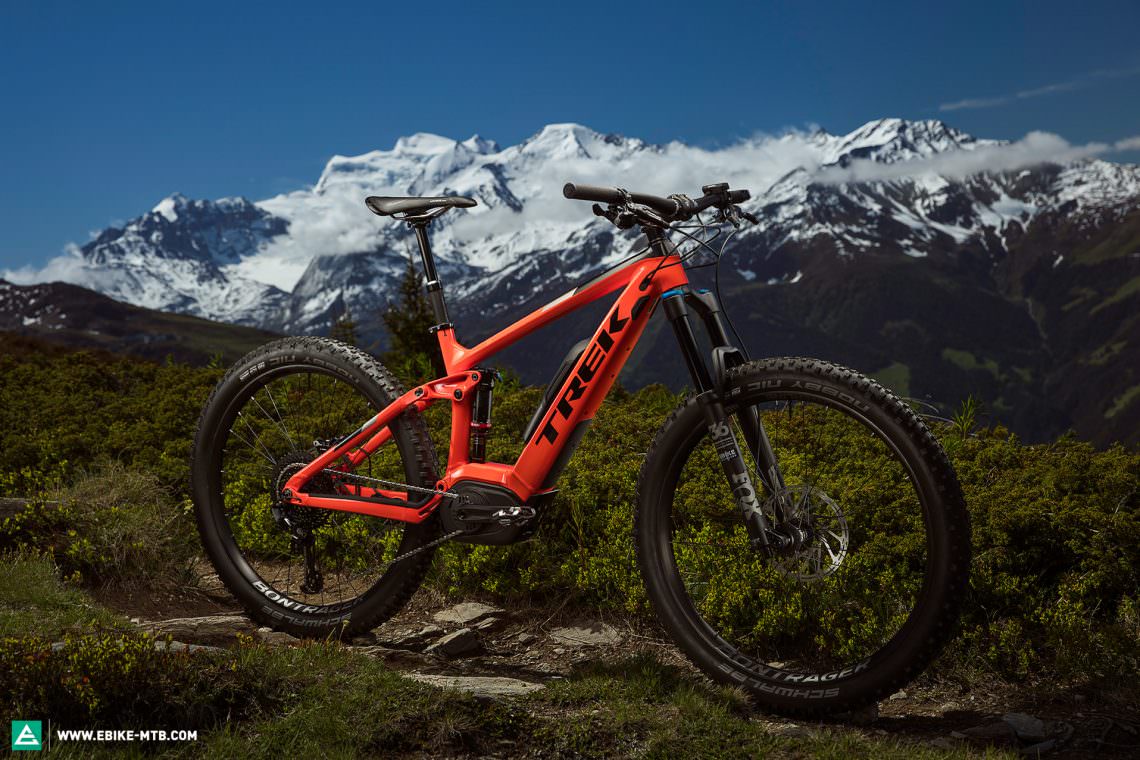
The heart of battery integration – the new downtube of the Trek Powerfly 2018
It was only last year that Trek awarded their Powerfly with a completely new frame, an overhaul that included newly-shaped lines and modern aesthetics. For the new season the frame concept remains basically the same, but a new look, with a newly developed downtube and a revisited engine mount, make for yet another noticeable change on the Powerfly Hardtail, Powerfly FS and Powerfly LT. The battery is now fully integrated in the large downtube. One interesting detail is that Trek opted for the trusted Bosch PowerPack over the newly launched Bosch PowerTube 500. An additional cover on top of the battery ensures even better integration and makes battery-removal easier. Apart from the new slicker look, the new design allows for a lower gravity centre which improves handling qualities.
Opting for a Bosch PowerPack was a clever choice, this way the Powerfly can be powered with any of the previously released Bosh batteries. Clever thinking. The battery can be charged both on and off the bike.

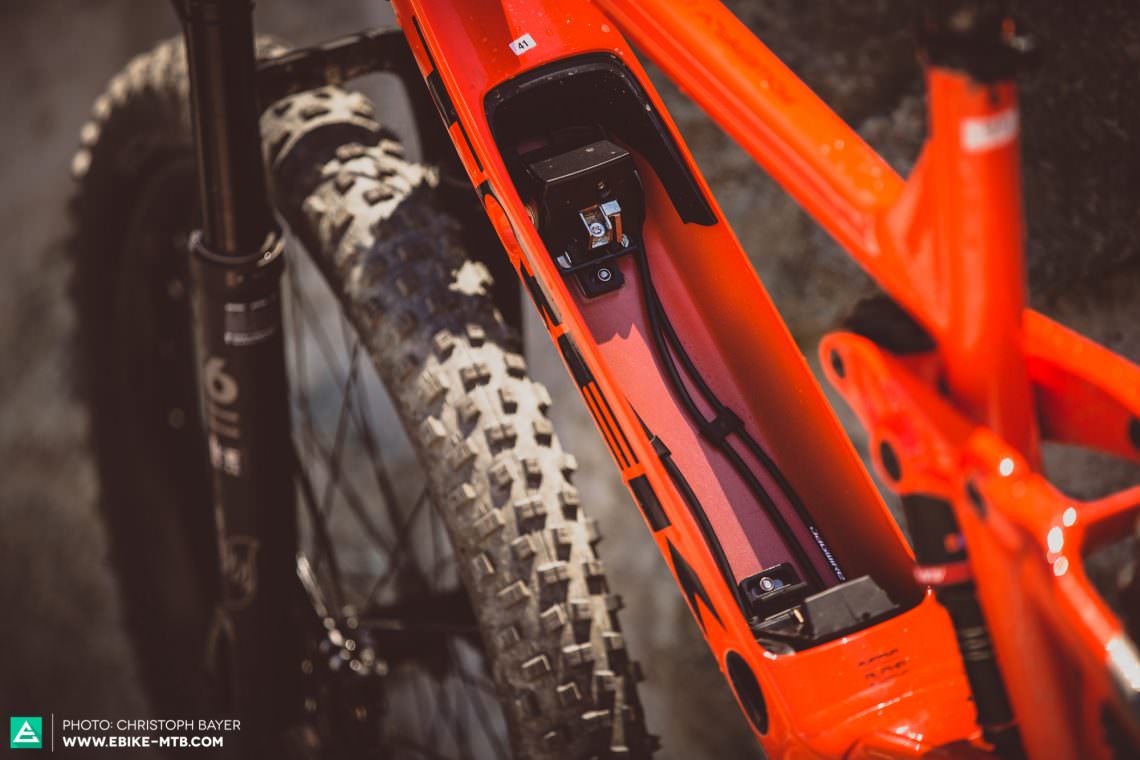

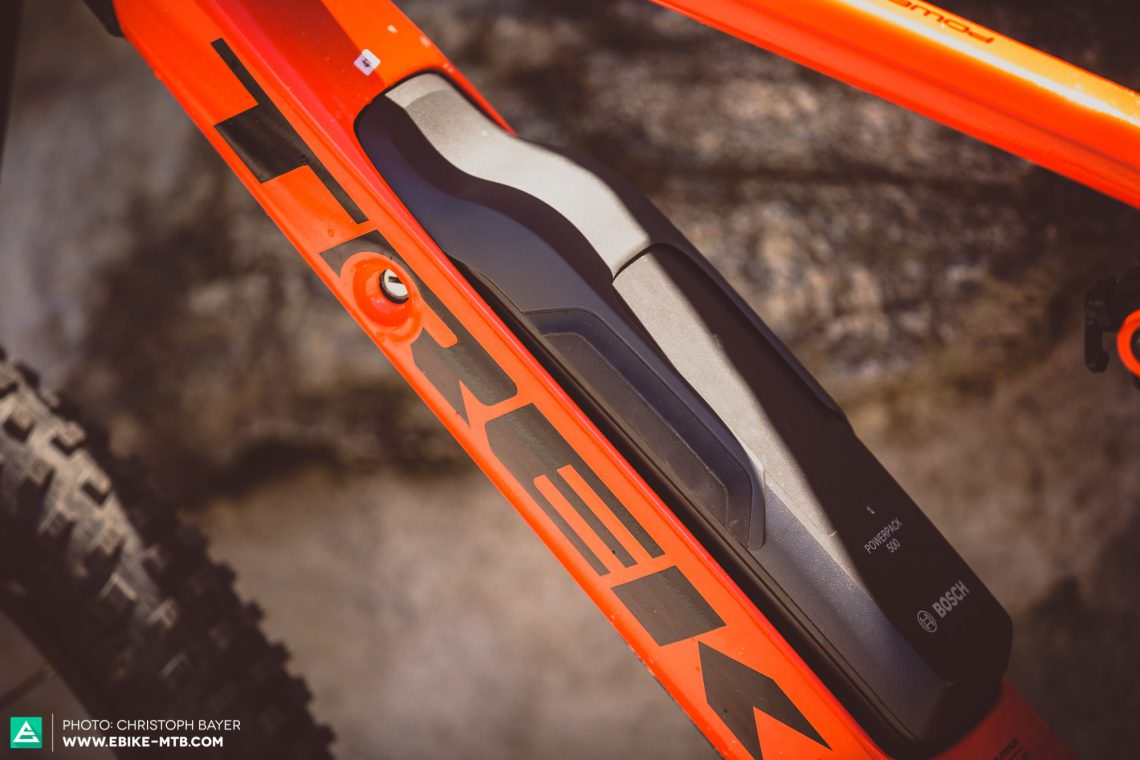
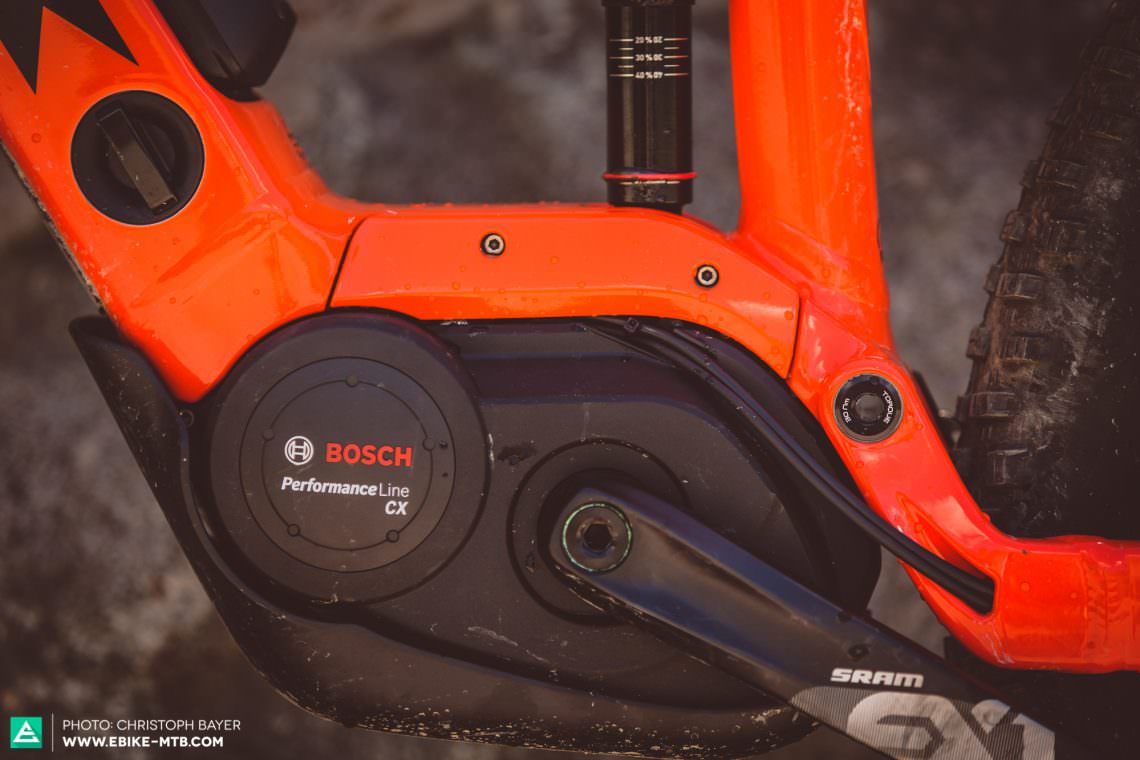


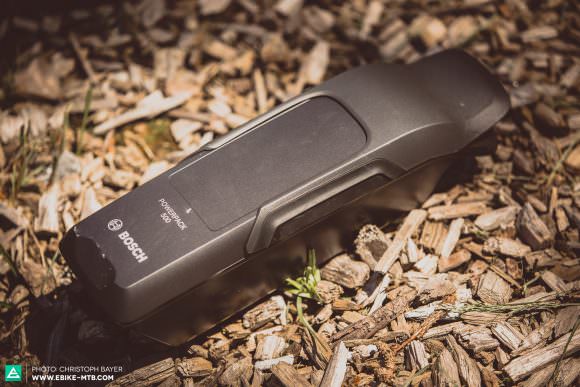
The frame of the Trek Powerfly 2018
Apart from the re-designed downtube and engine mount, nothing really has changed on the new Trek Powerfly. The updated version also features a Flip-Chip on the seat stay which allows to change the frame geometry, and a Knock Block system, which prevents the handlebars and fork from hitting and damaging the frame. The Trek Powerfly comes with 130 mm of travel, and 150 mm on the LT-version; both bikes share the same identical frame. A shock with more stroke provides for the extra travel on the LT-Version. If you’re not sure which version to go for, we highly recommend the one with more travel, as efficiency only plays a minor role on E-mountainbikes and the extra travel guarantees a safer, more forgiving ride on downhills and tough, technical terrain.
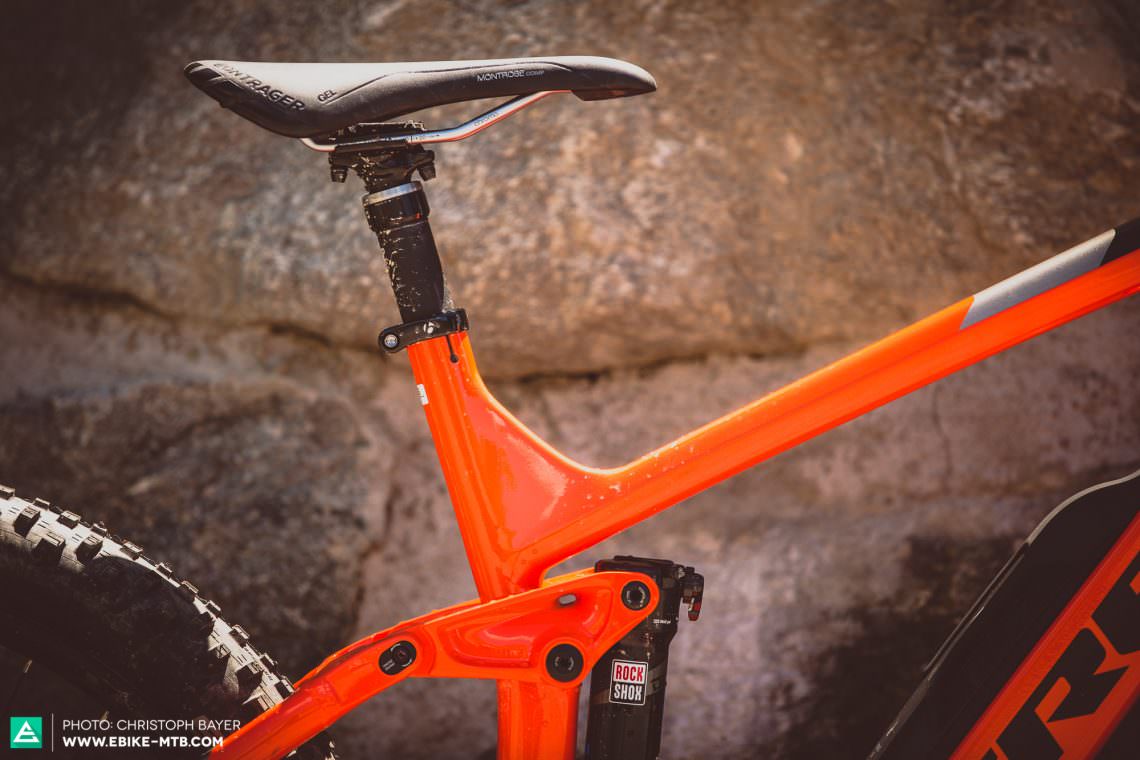
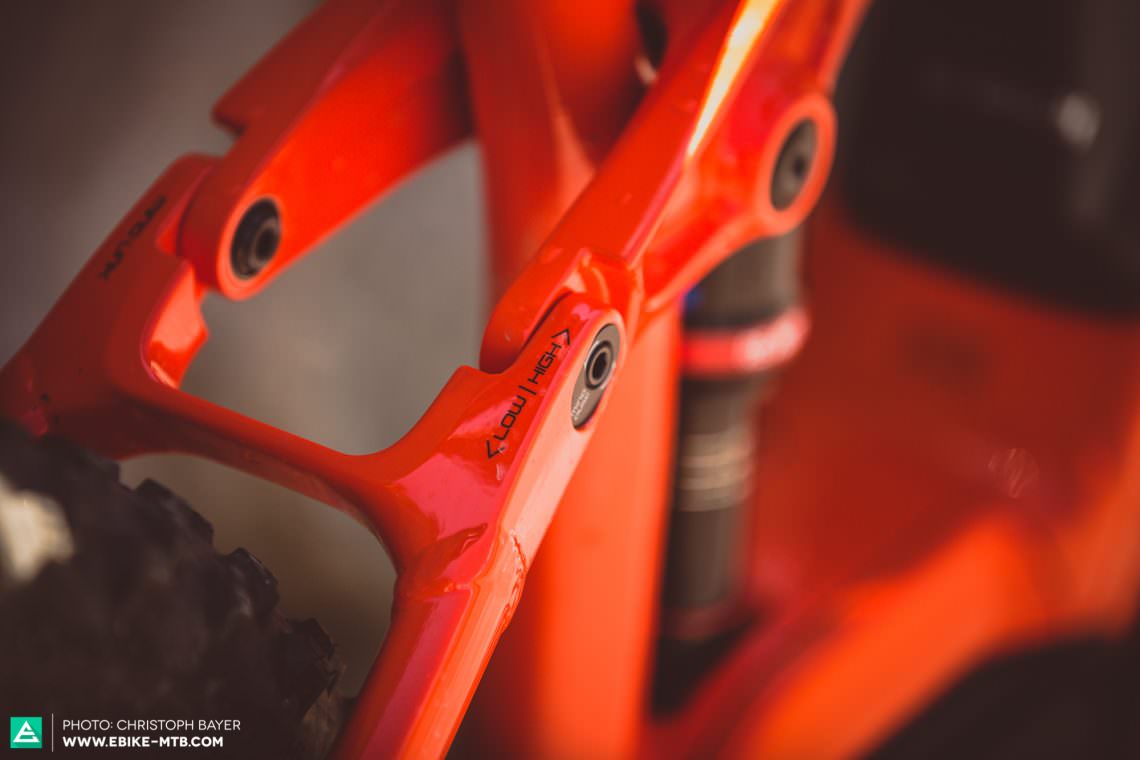

Optimised for E-Bikes – specs on the Trek Powerfly LT 2018
Particularly on e-mountain bikes, components are exposed to enormous amounts of stress, and durability can become an issue. For this reason, Trek has fitted all Powerfly models with their specifically developed, e-bike-specific Bontrager-Powerline wheelset. The wheelset is supposed to withstand higher amounts of stress whilst offering more stability, thanks to increased wall thickness; in the lab, the Bontrager-Powerline met the Downhill-certification standards. Trek has equipped their top of the range models, the Powerfly FS9 and Powerfly LT 9 with a EX1-groupset developed by SRAM and the powerful Guide RE-brakes. All versions share the same 500 Wh battery with a Bosch Purion-Display and they all come with the E-MTB-Mode as standard.

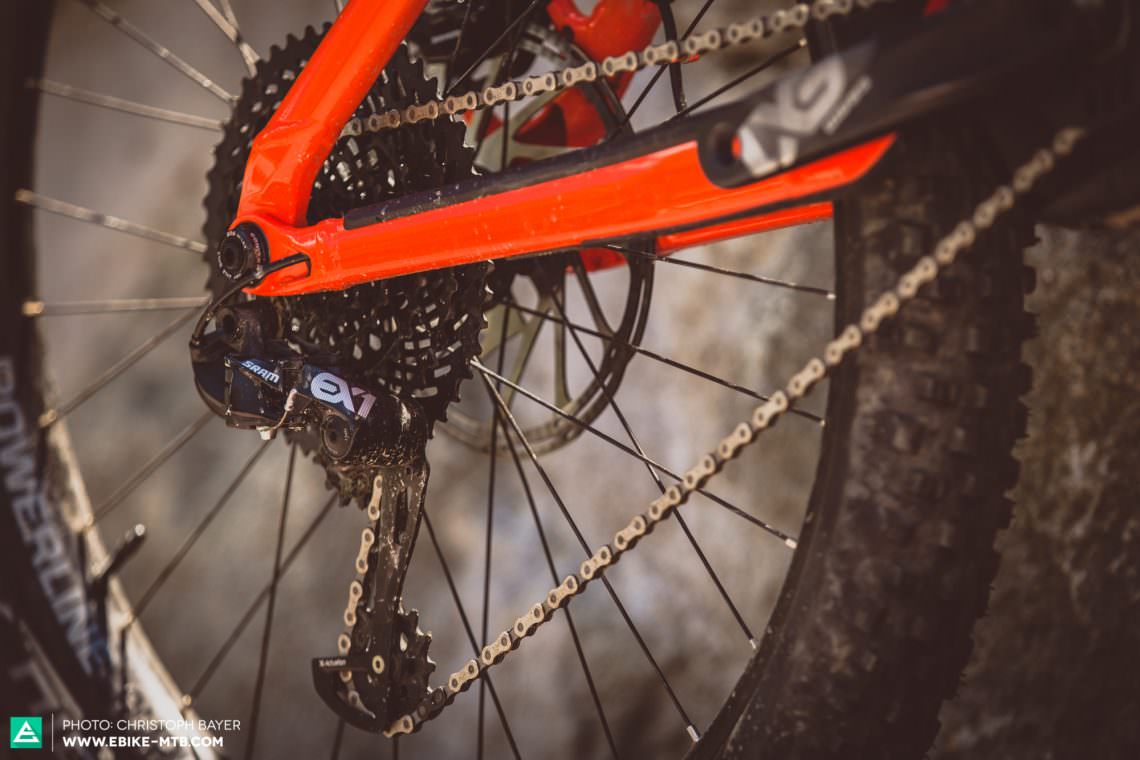
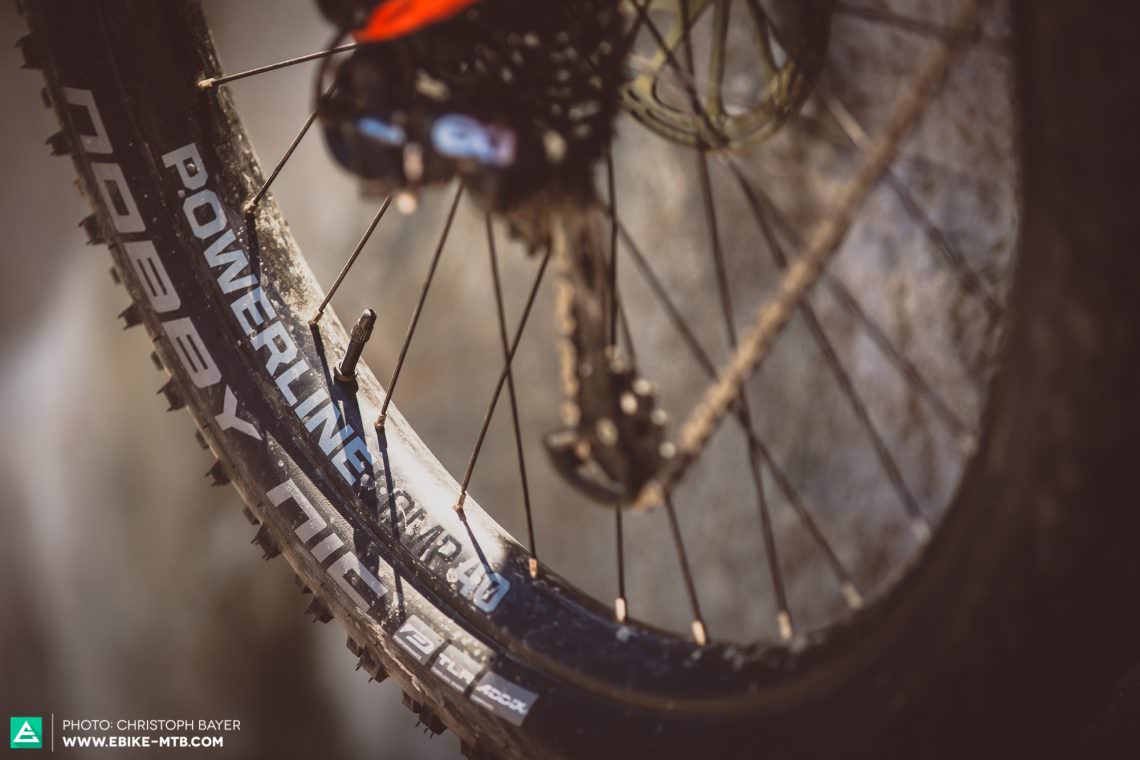
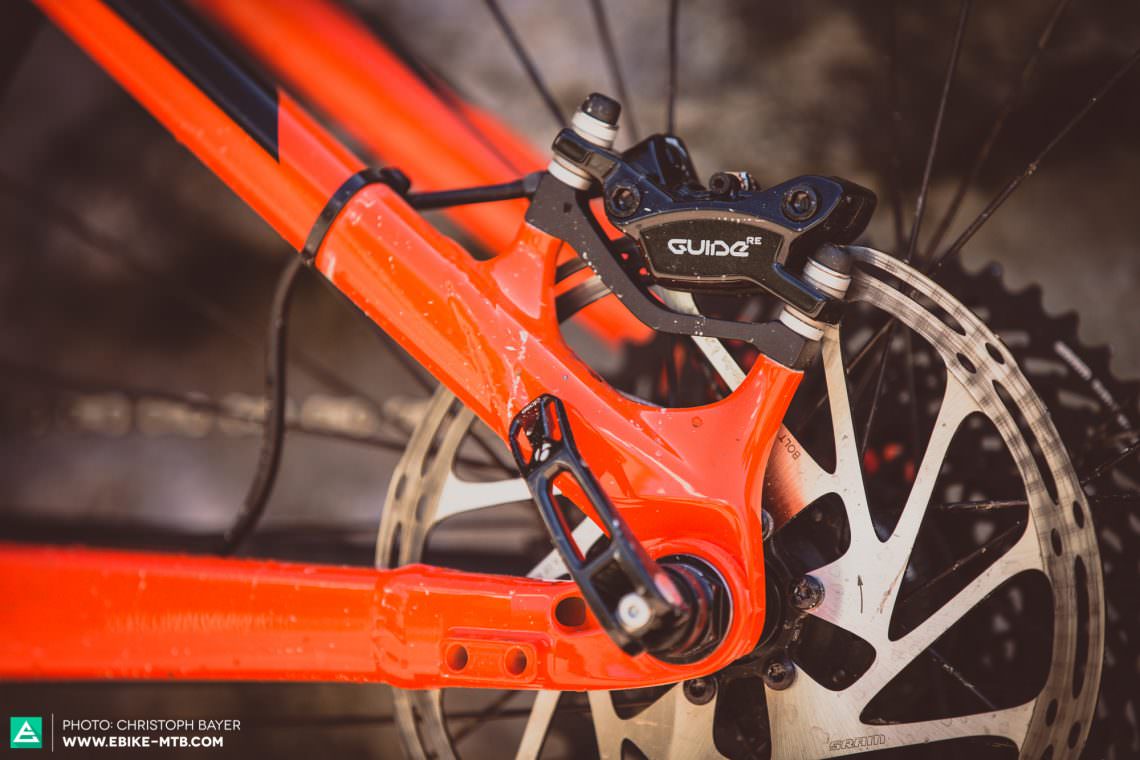
The geometry of the Trek Powerfly 2018
This time Trek didn’t bother changing the geometry of the Powerfly. The LT version is slightly slacker than the Powerfly FS, but that’s due to the longer travel of the fork. On both versions the geometry can be varied via a Flip-Chip.
Trek Powerfly FS
| Size | 15.5″ | 17.5″ | 18.5″ | 19.5″ | 21.5″ |
|---|---|---|---|---|---|
| Head Angle | [L]66.9° [H]67.4° |
[L]66.9° [H]67.4° |
[L]66.9° [H]67.4° |
[L]66.9° [H]67.4° |
[L]66.9° [H]67.4° |
| Seat Angle | [L]71.5° [H]72.0° |
[L]71.5° [H]72.0° |
[L]71.5° [H]72.0° |
[L]71.5° [H]72.0° |
[L]71.5° [H]72.0° |
| Reach | [L]405 mm [H]399 mm |
[L]435 mm [H]442 mm |
[L]453 mm [H]461 mm |
[L]466 mm [H]473 mm |
[L]490 mm [H]497 mm |
| Head Tube | 100 mm | 100 mm | 105 mm | 110 mm | 125 mm |
| Seat Tube | 368 mm | 419 mm | 445 mm | 470 mm | 521 mm |
| BB Drop | 24 mm | 24 mm | 24 mm | 24 mm | 24 mm |
| Chainstays | 474 mm | 474 mm | 474 mm | 474 mm | 474 mm |
| Wheelbase | [L]1177 mm [H]1176 mm |
[L]1207 mm [H]1207 mm |
[L]1228 mm [H] 1227 mm |
[L]1243 mm [H] 1242 mm |
[L]1273 mm [H]1272 mm |
| Stack | [L]594 mm [H]589 mm |
[L]593 mm [H]588 mm |
[L]598 mm [H]592 mm |
[L]602 mm [H]592 mm |
[L]616 mm [H]609 mm |
Trek Powerfly LT
| Size | 15.5″ | 17.5″ | 18.5″ | 19.5″ | 21.5″ |
|---|---|---|---|---|---|
| Head Angle | [L]66.0° [H]66.5° |
[L]66.0° [H]66.5° |
[L]66.0° [H]66.5° |
[L]66.0° [H]66.5° |
[L]66.0° [H]66.5° |
| Seat Angle | [L]71.5° [H]72.0° |
[L]71.5° [H]72.0° |
[L]71.5° [H]72.0° |
[L]71.5° [H]72.0° |
[L]71.5° [H]72.0° |
| Reach | [L]393 mm [H]399 mm |
[L]423 mm [H]430 mm |
[L]441 mm [H]449 mm |
[L]454 mm [H]461 mm |
[L]478 mm [H]485 mm |
| Head Tube | 100 mm | 100 mm | 105 mm | 110 mm | 125 mm |
| Seat Tube | 368 mm | 419 mm | 445 mm | 470 mm | 521 mm |
| BB Drop | 16 mm | 16 mm | 16 mm | 16 mm | 16 mm |
| Chainstays | [L]475 mm [H]474 mm |
[L]475 mm [H]474 mm |
[L]475 mm [H]474 mm |
[L]475 mm [H]474 mm |
[L]475 mm [H]474 mm |
| Wheelbase | [L]1183 mm [H] 1182 mm |
[L]1213 mm [H]1212 mm |
[L]1233 mm [H]1233 mm |
[L]1248 mm [H]1247 mm |
[L]1278 mm [H]1277 mm |
| Stack | [L]599 mm [H]584 mm |
[L]599 mm [H]594 mm |
[L]604 mm [H]598 mm |
[L]608 mm [H]598 mm |
[L]622 mm [H]616 mm |
The Trek Powerfly LT 2018 on the trail
As we mentioned above, Trek left the geometry of the Powerfly LT untouched. So it’s no surprise that once we’re on the saddle, everything still felt very familiar and comfortable. A rider measuring 1.80cm will feel very centred and comfortable on a 19,5” frame. The short headtube makes for a very low cockpit, that’s why we immediately placed all of the spacers underneath the stem, changing to a slightly more upright position and at the same time getting more control on steep sections.
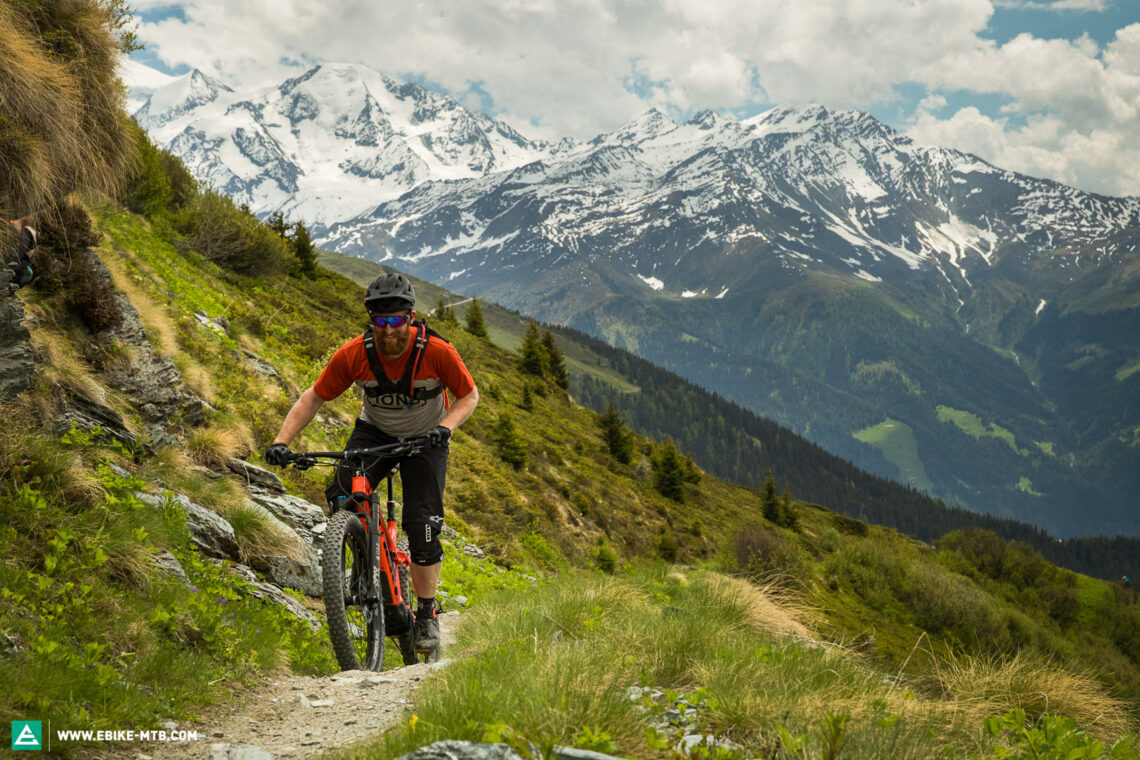
Heading up-hill, the Bosch- motor pushes with loads of power and a good amount of noise, the modulation of the new eMTB mode is good. Power-transfer is direct and without any delay, which makes frequent switching between modes redundant. Having said that it is advisable to switch into the Tour or Eco- modes from time to time, that will noticeably extend the battery life. The eEMTB-mode provides quick bursts of maximum-power, and obviously drains the battery quite considerably.
The 475 mm long chainstays make the Powerfly LT a true and great climbing artist. Even on the steepest slopes, the front wheel always seems to be glued to the floor! The RE:aktiv- Technology allows the rear-end to react to ground irregularities when suspension damping is activated, generating plenty of traction.

When turning the nose downhill, the Powerfly is a super-smooth ride! The bike’s weight distribution is excellent and makes it easy to keep an equal amount of weight on both wheels. There is no such thing as over- or under-steer on the Powerfly. The chassis transmits loads of sensitivity and underlines the safe handling of the bike. However, the cheaper Performance-version of the Schwalbe Nobby Nic-tires fitted to our test bike don’t do the bike justice, clearly lacking grip and traction. Trek has confirmed, their series-bikes will be fitted with the better Evolution-version of the tires.
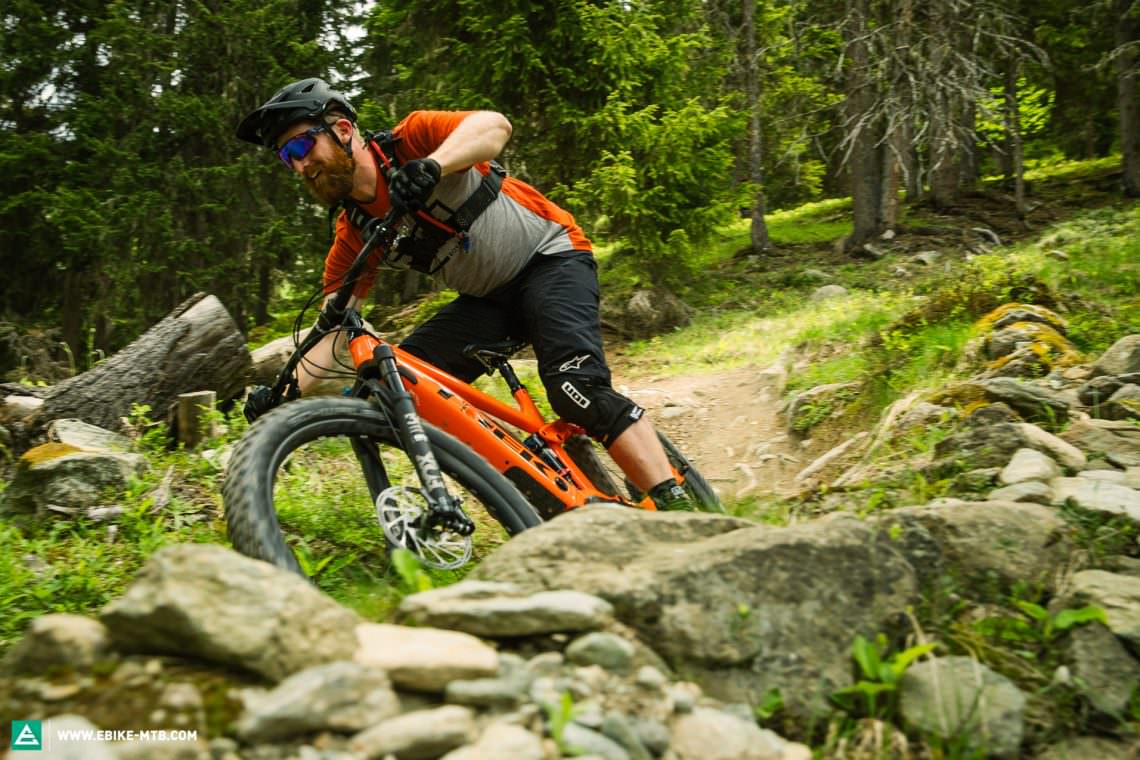
On narrow, windy trails, the Powerfly needs a bit of physical intervention in order to get smoothly around corners. Those who are looking for a more playful handling, should consider a smaller frame size. Everyone else will appreciate how much safety the Powerfly LT manages to inspire, even on the roughest and most challenging terrain.
Our conclusions
The Trek Powerfly might not be the latest milestone in E-Mountainbike history, still it is a very good E-Mountainbike. It’s managed to convince us in many ways, with its well thought-through details, safe handling and its already proved drive concept. We definitely recommend the LT-Modell, a great climbing machine as the FS is, but a much better and safer bike on descents.









